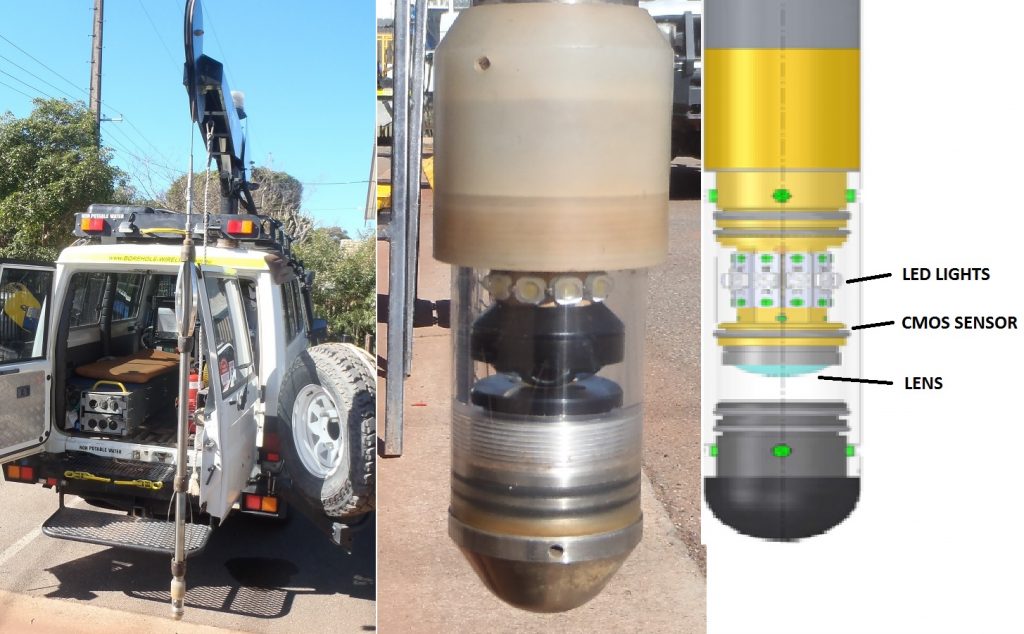Borehole Imaging – Optical Scanner – Overview.
Application:
The optical scanner is a high resolution CMOS camera borehole imaging probe which is commonly run in combination with an acoustic scanner for detailed, high resolution images of the borehole through 360°. Ideal and commonly used for structural studies and geotechnical investigations but has applications in casing inspection and insitu stress analysis.
Method:
The optical scanner is a borehole imaging probe which is capable of a high resolution, true colour image thus creating an image of the full 360 degree borehole wall. The high resolution CMS camera system is focussed through a prism to all 360° slices of the borehole wall to be recorded during a survey.
A single, true colour image is produced from the survey.
The optical scanner operates in air filled and/or clear fluid filled conditions. Ideally the probe should be centrallised in the borehole to avoid unwanted shadow effects.
Calibration:
Of importance for the optical scanner is the marker position which is established during manufacture and/or servicing. The marker position acts as the reference point for all subsequent image orientation. Internal magnetometers and accelerometers, used to probe and image orientation are factory calibrated.
Verification:
Verification, performed using jigs or project boreholes where a known reference or structure orientation is available, focus on confirmation of the marker position and the functionality of the internal magnetometers and accelerometers.
Data Processing:
There are two main areas of image data processing:
Orientating, filtering and de-spiking the images, as well depth validation.
Picking and classifying or structures through to true structure dip and dip direction generation.


